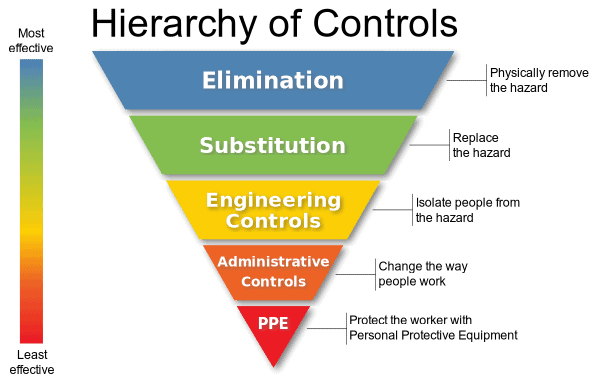What are your employer responsibilities under WHS?
One of your biggest responsibilities as an employer, or Person Conducting a Business Undertaking (PCBU), is providing a safe place of work for your employees.
This duty doesn’t just extend to your employees and contractors, it’s a duty to make your place of business safe for anyone who enters it. This might be customers, suppliers, inspectors, the general public, and anyone else who enters the premises.
Part of providing a safe place of work is identifying risks and taking active and reasonable steps to reduce these risks.
Failing to do this can be negligent, and could expose your business to liability. In some serious cases, you can also be held criminally negligent, so you need to take your role seriously!
How do you provide a safe place of work?
Providing a safe workplace is different for every business.
You’ll need to think about how you work, what your team is required to do, what risks they’re exposed to and the layout of your workplace:
- Are there any obvious hazards?
- Do you work with chemicals?
- Is the workplace properly ventilated?
- Are there any structural risks such as stairs or changes in floor level (trip hazard)?
Depending on the work, there may also be psychological risks such as burnout, or other mental harm.
The first step in providing a safe place of work is being aware of your duty and identifying risks.
The best way to do this is through a risk audit.
Other Employer Responsibilities
You also have a duty to consult with your workers about decisions and procedures that are likely to affect their health and safety. This may involve appointing a WHS representative or holding information sessions where workers can provide input.
A WHS Policy is a great risk management tool for your business.
A WHS Policy outlines your commitment to the health and safety of your team at work. If something goes wrong, you’ll be able to refer to the policy to evaluate whether it was adhered to. This should form a part of your risk management strategy for your business.

What steps do you have to take to minimise risks?
Once you’ve identified possible risks in the workplace, you’ll need to form a plan for how to deal with them.
Best practice tells us that you should first try to eliminate the risk first.
If you can’t eliminate, you replace, then isolate, then try to change, and if all else fails, you should protect the worker using personal protective equipment (PPE).

Do you need to use Personal Protective Equipment (PPE)?
It depends on the work that your employees are undertaking as to whether or not they’ll need to use PPE. It also depends on the risk.
You should refer to the hierarchy of control (above) to determine what’s appropriate. Usually, PPE is the last line of defence. This might be equipment such as safety glasses, ergonomic office furniture, noise cancelling headphones, gloves, access to counselling and more.
What about employee responsibilities for WHS?
Workers have obligations under work health and safety laws too.
While at work a worker must:
- take reasonable care for their own health and safety
- take reasonable care for the health and safety of others
- comply with any reasonable instructions, policies and procedure given by their employer, business or controller of the workplace.
Workers can also be considered visitors under some circumstances.
Need some legal help? Book a Discovery Call
If you’re unsure about your employer responsibilities under WHS law, or if you’d like to improve your risk minimisation strategy with a WHS policy, you can book a free discovery call with Her Lawyer here.



